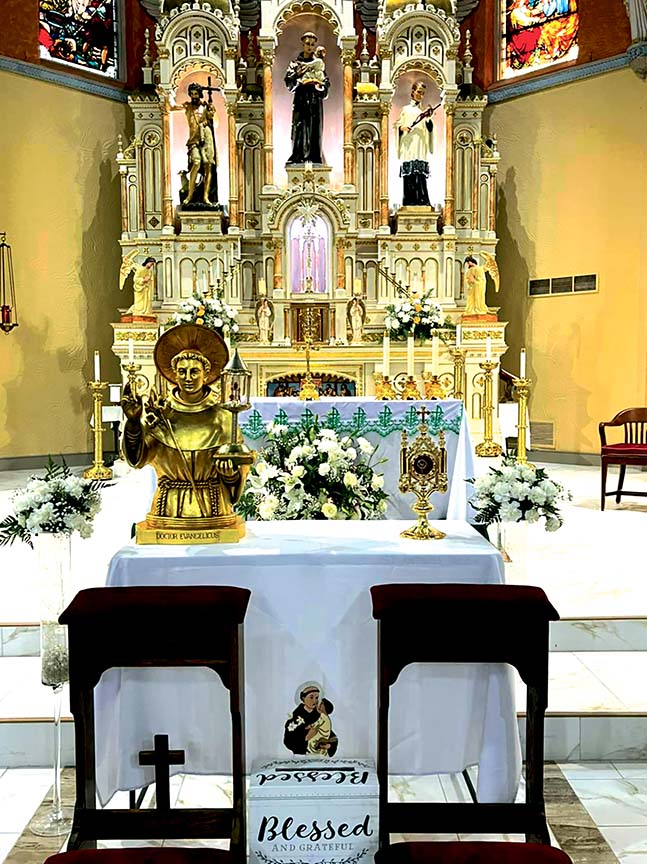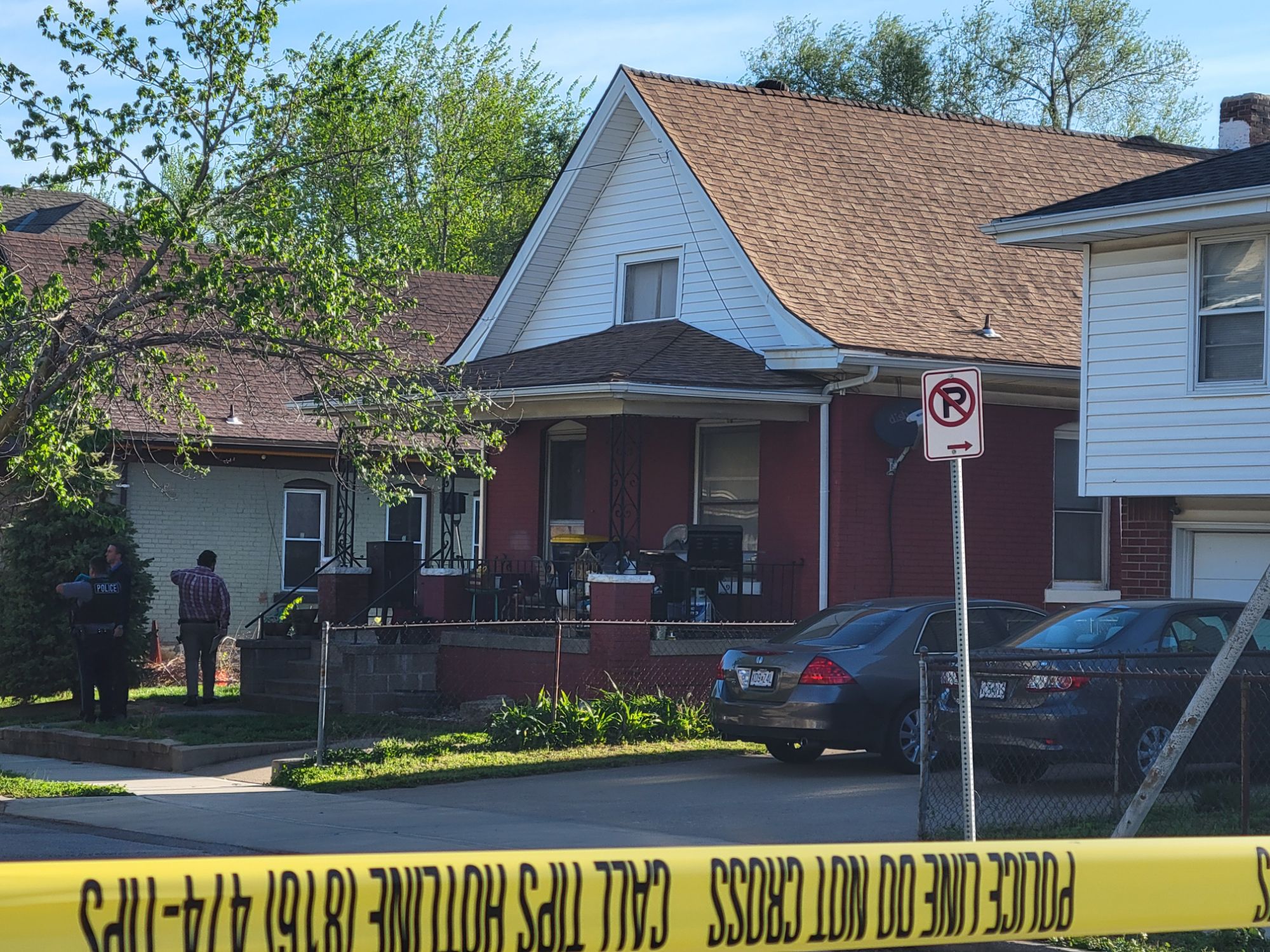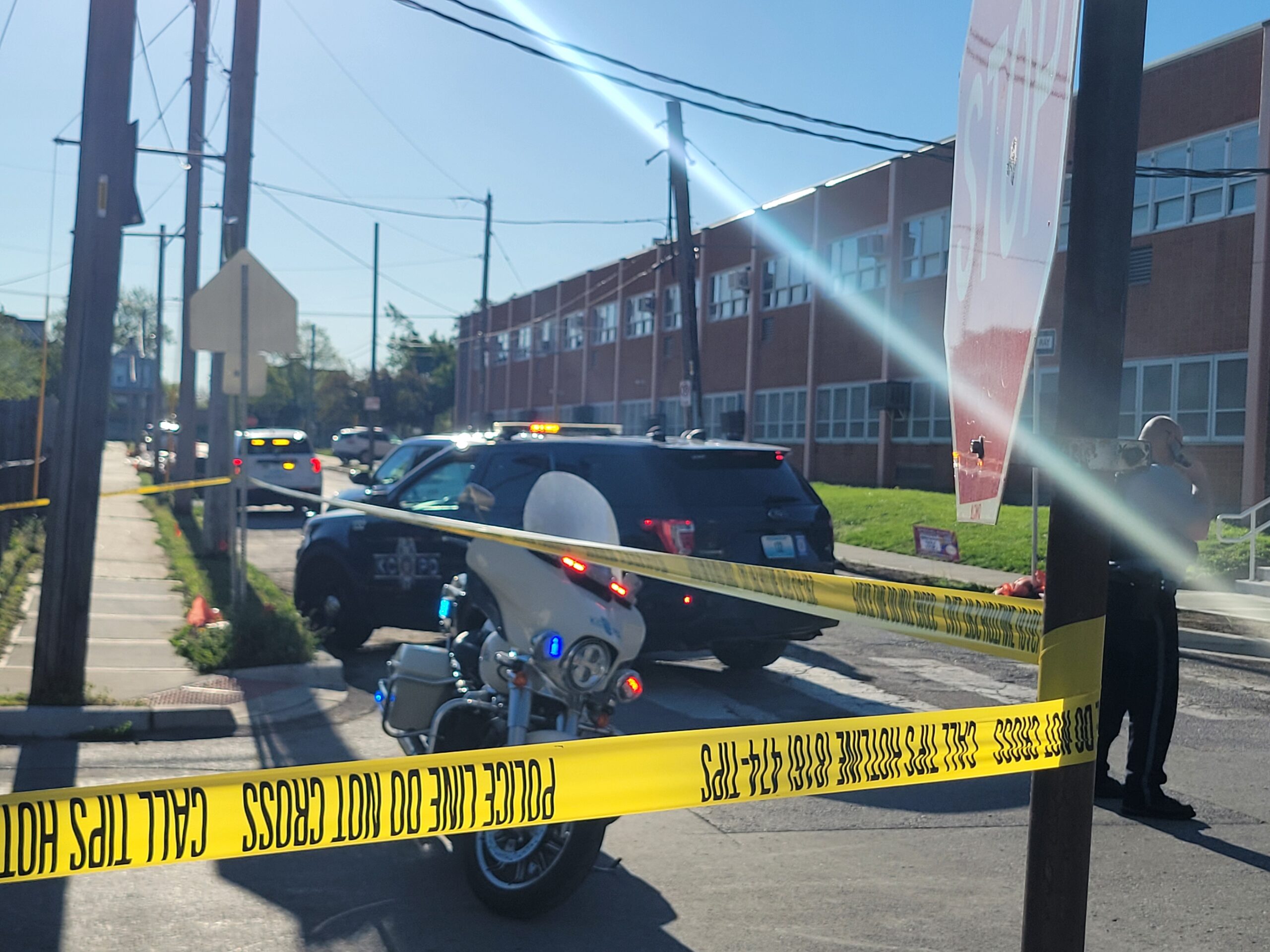
Abby Hoover
Managing Editor
Hundreds gathered this weekend at Northeast Catholic parishes to venerate a precious relic of St. Anthony from his Basilica in Padua, Italy.
The relic was accompanied by Franciscan Friar Fr. Mario Conte, one of the 50 friars who minister in the Basilica of St. Anthony in Padua, who held services in both English and Spanish at Holy Cross Parish at 5106 St. John Ave., Our Lady of Peace Parish at 1029 Bennington Ave., and at St. Anthony Parish, 309 Benton Blvd.
St. Anthony of Padua, originally named Fernando Martins de Bulhões, was born in 1195 in Lisbon, Portugal. St. Anthony was a Fransiscan friar, a doctor of the church and a patron of the poor.
According to the Encyclopedia Britannica, Anthony was born into a wealthy family and was raised in the church. He joined the Augustinian canons in 1210 and became a priest. In 1220, he joined the Franciscan order, with intentions to preach to the Saracens (Muslims) and be martyred.
On his way to Morocco, he became seriously ill and was forced to return home. However, his ship back to Portugal was blown off course, eventually landing in Sicily. Because of his continuing poor health, he could not continue his missionary work among the Saracens.
Instead, he taught theology at Bologna, Italy, and at Montpellier, Toulouse, and Puy-en-Velay in southern France. He won great admiration as a preacher and was noted for his simple yet profound teaching of the Catholic faith. He died en route to Padua, Italy, on June 13, 1231, where he is buried. Now, the church celebrates St. Anthony’s feast Day every June 13.
St. Anthony was the most celebrated of St. Francis of Assisi’s followers and had the reputation of a miracle worker. On January 16, 1946, Pope Pius XII declared him a doctor of the church. Among his authentic writings are sermons for Sundays and feast days, published at Padua in three volumes in 1979.
St. Anthony is invoked for the return of lost things.
“We can say that Anthony, worldwide, is the most loved saint in the world, statistically speaking,” Conte said. “People, of course, don’t ask him only little things about finding the glasses or even something very important that they lost, but of course, they ask him to find things that are much more important, for example, faith.”
With church attendance declining, Conte said many parents and grandparents pray to St. Anthony to restore their children’s faith.
“This is really a major concern because they say they are out there and then they completely ignore the church and they completely ignore our faith,” Conte said. “So this is, I would say, the number one concern of people, but then there is another concern, of course, that everybody has got, health.”
Thousands travel to the Basilica of St. Anthony each year, imploring the saint to restore their health.
“We have people coming back and thanking St. Anthony because they were cured, and they were able to have their health restored,” Conte said. “Also, something that is coming up mostly in very recent years, and because probably in the past, we were better off but now, a lot of people pray to find a job.”
Centuries ago, St. Anthony was also considered a matchmaker, Conte said.
“I love to have people come also to pray to find a good husband or a good wife, because unfortunately nowadays, you know, many marriages don’t last,” Conte said. “We also have a lot of people who are coming out of a broken marriage, and they are suffering a lot.”
To venerate a relic, the Catholic church recommends an exterior gesture that fits the occasion and corresponds to a person’s interior disposition. Someone venerating a saint’s relic can kiss or touch the glass case that houses the relic, or simply stand near the relic in a prayerful attitude, raising one’s heart and mind to God and invoking the intercession of the saint. Other acceptable gestures include signing oneself with the sign of the cross or kneeling in front of the relic in prayer.
Over the years, Conte has seen a variety of reactions to being in the presence of the relics.
“That is the important part, what did you actually feel when you touched the relic of St. Anthony?” Conte is always curious to know. “I’ve seen that some people even cry, some people smile, some people are very intense.”
Conte brought the relics at the request of St. Anthony parish priest Andres Moreno.
“He is in charge of a church dedicated to St. Anthony, and he was feeling that he lacked something, a relic of St. Anthony,” Conte said. “So, looking on the internet, he found out that we have an association here in the States, which is in Chicago, our hand here in the States.”
Moreno was able to make the request through the Chicago office to the Friars of the Basilica of St. Anthony in Padua, Italy, just in time for the parish’s centennial celebration.
“He asked if it were possible to have a relic of St. Anthony, and of course, we answered, as we always do, that if the Bishop of the place, the diocesan, was asking for him for a relic from St. Anthony, we will try to do that,” Conte said.
The Catholic Diocese of Kansas City-St. Joseph responded immediately in support.
Conte recognizes the importance of providing connection with relics of beloved saints to parishioners.
“Connection is that word to explain a relic, connection, because nowadays we are accustomed to technical connection, we are accustomed to work with computers, we are accustomed, and we are very frustrated when we don’t have a connection,” Conte said. “But we’re not talking about technical or whatever, but human connection. Human connections are very important, connections of love are very important. And sometimes, I would say, objects can have the capacity to give you this kind of connection.”
He compared it to how he keeps his mother’s wedding ring, and although it is just a piece of jewelry, it makes him feel connected to her after her death.
“When I hold it in my hand, I feel her close to me,” Conte said. “It’s a bridge of love. It is connection, and this connection can be a different thing for another person, it can be a photograph of a person you loved or a letter or whatever. But these are all connections of love.”
Conte said he likes to picture St. Anthony, someone many Catholics view as a friend and advocate, tugging on God’s sleeve, making requests on behalf of those who have shared their prayers.
“This is a simple explanation I always give, so I encourage people to go there and have their special connection,” Conte said.
He shared a quote from Pope Emeritus Benedict XVI that he gave one day when he was speaking in front of young people in Cologne, Germany.
“In allowing people to venerate the relics of the saints, the church does not forget that in the end, they are just bones, they are just human remains, but they are human remains touched by the love of God, touched by the Spirit of God.”
Maria Hart, director of the Anthonian Association of the Friends of St. Anthony of Padua, accompanied Conte and the relics on their trip to Kansas City.
The Association has been in the United States since 1990, moving from Indiana to Chicago in 2019.
“We distribute the magazine worldwide in several languages, as well as minister to devotees of St. Anthony over the phone and the internet with our religious events throughout the United States,” Hart said. “When they want to communicate with Padua – many will never go to Padua – but through us, they have this connection to the Basilica and to the friars.”
When people write to the Association, they’re writing to the friars who sit on the nonprofit’s board, and when they ask for prayers, the friars are praying for them. The association’s mission is twofold: evangelization through the magazine, the relics, and letting everybody know all the work that comes with knowing St. Anthony; and sponsoring a charitable organization that focuses on providing services to the poor, both in the US and internationally.
Prior to COVID-19, Conte traveled with the relics frequently. However, this is his first visit post-COVID, and it is shorter than usual.
His work is to facilitate a connection with Anthony, and he does that in many ways. Conte’s work has evolved greatly over the past decade, as he embraces technology to keep his church engaged.
“We prepare several little movies, five minute movies, for the feast,” Conte said. “We do these little movies during the major feasts during the year, Christmas, Easter, the Day of the Sick.”
This year, in preparation for the Feast of St. Anthony, he created video meditations on the masterpieces of the Basilica. He took people around the Basilica virtually, giving them a historical and artistic explanation, and a spiritual explanation. Last year, he also explained the life of Saint Anthony, the classical miracles and then new miracles of St. Anthony.
Conte shares messages of hope, updates on his travels with relics of St. Anthony, and daily prayers on Twitter @FriarMario.
He also directs the Messenger of Saint Anthony, the Catholic international magazine published by the Friars of the Basilica of Saint Anthony, Padua, Italy.
Conte travels to English speaking countries, the US, Australia, England, Ireland, and others.
“The last journey was actually 2019 in December, South Carolina, and that was the end because of course, we had the COVID-19 and up to now, we just stopped because it was dangerous,” Conte said. “We were not allowed. There were many difficulties, also, to go abroad. This is a kind of return, and we decided to have this small tour… We hope this is a reopening of these doors, a new possibility. This is an event we are very happy to have.”
Conte thinks it is important to find new ways to connect with people, but above all else, there must be truth.
“To be truthful and to give people hope, to give people the possibility to see life in a better way and have courage,” Conte said. “Sometimes you really need courage in life because we are going through a difficult time and we know that life is not just happiness and parties or things like that. There are a lot of people who suffer every day.”
With evolving technology, he is sure that the Church will always be able to connect with people, but that they need to have courage.
“The need to have the courage of the first apostles when they were just going out into the world and showing what was good, what was not,” Conte said. “We have to have the courage to be more inclusive with people, not to consider that they are outcasts – that is not good for us – to be more inclusive, to be more open, and especially be able to go with a smile towards the people, because you are actually bringing with you the hope, you’re bringing with you the the joy of being Christian.”
As for the next generation of Catholics, Holy Cross Catholic School’s student body attended Friday’s noon mass to learn the importance of St. Anthony and to venerate his relics.
“As Father [Conte] was saying in his homily today, I learned something beautiful about relics because he talked about the connection that we should have with the saints,” said Father Olvin Giron, pastor at Holy Cross. “And I think that’s what we’re trying to do with our kids, having the whole school today. We usually have mass on Wednesdays, but I decided to move it to Friday, today. I wanted them to have this experience of getting close to a saint, especially St. Anthony.”
“For me as a pastor, it’s very important to make them understand that we have all these beautiful religious practices about the saints, and how to venerate them and how to connect with them,” Giron said. “So I think it is important because we’re all in a lot of turmoil. I think it is important to let them know that holiness is also something that we can achieve. And I think the saints remind us of all of that.”
For Giron, it is important that both his Spanish speaking and English speaking parishioners got to have this experience.
“We have a bilingual community here, of course, we’re more Hispanics than Americans per se, but we have a bilingual community, and I think it’s important for us and I thank Father Andres for thinking about us and then sharing the relic with us,” Giron said. “So I think we’re connected to each other here.”
Conte, who studied both English and Spanish, knew it was important to connect with the large Spanish speaking community in Kansas City.
Conte explained to the students what the relics symbolize, and also what the relics physically are. One relic was gifted to St. Anthony Catholic Church, and will remain at the parish. The other will return to Padua with Conte, and then travel to other parishes around the world.
The relic he brought that will return to Padua consists of several layers of skin from the saint inside a glass lamp, held by a small golden statue of St. Anthony. The other is a piece of the saint’s flesh, but not an identifiable piece of the body. Both of these relics were taken from the saint’s remains after his tomb was opened for a second time in 1981. The only other time St. Anthony’s tomb was opened was in 1263, just a few decades after his death.
St. Anthony Catholic Parish at 309 Benton Blvd. will host its Centennial Celebration Dinner on October 15 at 5 p.m. For more information, visit
stanthonykc.org.


















